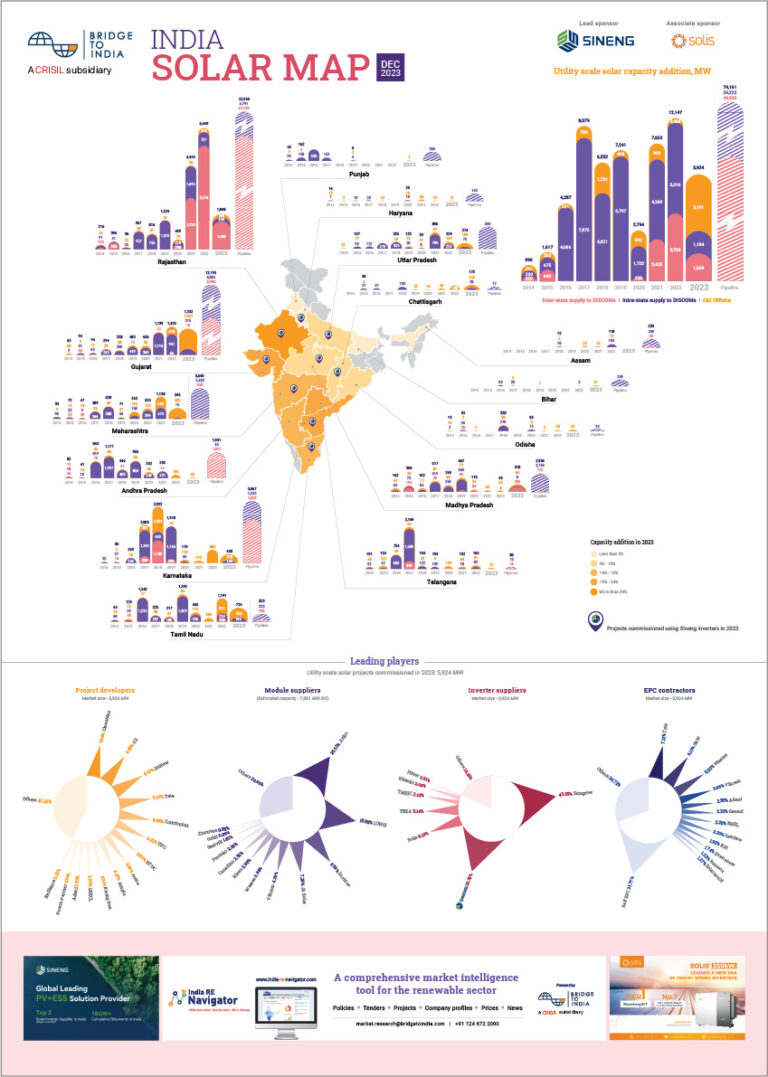As COVID pandemic rages across the country, MNRE has granted further time extension to projects under construction. The extension, not yet quantified because it is still too early to assess actual impact, would be applicable only to projects tendered by central government agencies with scheduled COD after 1 April 2021. But state government agencies are expected to follow suit.
- COVID is not only delaying project execution but also curbing DISCOM appetite for renewable power;
- Fall in investment potential risks undermining investor confidence;
- Going forward, India would need to compete harder for attracting global capital;
As we assessed last year, COVID is not only delaying project execution but also suppressing power demand and curbing DISCOM appetite for renewable power. Even setting aside manufacturing-linked and storage tenders with relatively expensive power costing around INR 3.00/ kWh or more, there are about 6,000 MW of projects with unsigned PPAs adding to investor anxiety.
Capacity addition has now been slowing down for three straight years. India added only 2,725 MW of solar and wind capacity in Q1 2021, taking total installed renewable capacity to 94,443 MW by 31 March 2021. Our 2021 capacity addition estimate of 16 GW now looks distinctly unfeasible. We believe that the actual capacity addition may be only about 10 GW. Investments, taking into account falling costs, have fallen even more steeply. In 2020, total investment in the sector amounted to only about INR 241 billion (USD 3.3 billion, see chart), down 75% over 2017.
Figure: Annual capacity addition and estimated investment

Source: BRIDGE TO INDIA research
Note: Investment estimates exclude investments in solar parks, transmission and distribution network
The slowdown is consistent across the sector including utility scale, open access, rooftop solar, agricultural solar and manufacturing. But it would be wrong to blame everything on COVID. Age old issues including delays in land acquisition and transmission connectivity, poor DISCOM finances and policy uncertainty continue to derail ambitions. Many critical problems such as tariff renegotiations, curtailment, import duties, delays in ‘change in law’ approvals have been self-inflicted. Looking ahead, increase in module and other input costs, risk of anti-dumping duty and environmental challenges are only going to compound these woes further.
Fall in capacity addition and investment potential risks undoing the greatest success story of the Indian renewable sector. Leading international investors including energy utilities, oil & gas companies, sovereign wealth funds, pension funds and other developers have been drawn to India mainly because of the lure of its large market size. But they are feeling disenchanted and unwanted. In a country usually crying out for more capital, the situation paradoxically now is one of high investor appetite unmatched by weak demand for capital. Project developers find it easier to raise capital than to deploy capital leading to unhealthy competition and downward pressure on returns.
At a time when other countries are doubling their efforts to grow renewable sector, it is imperative for the Indian government to resolve the pressing problems urgently to avoid investor exits.












